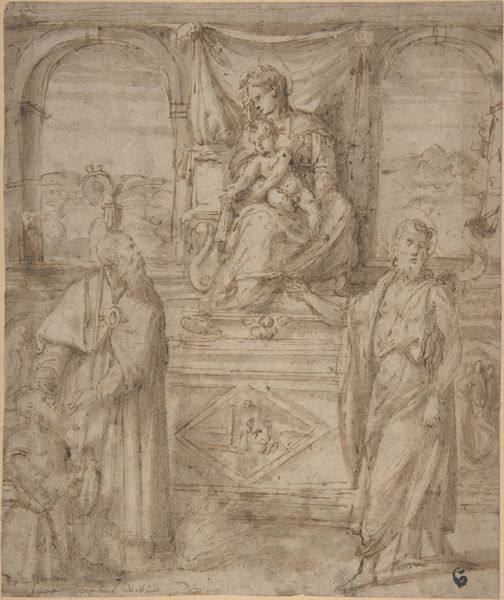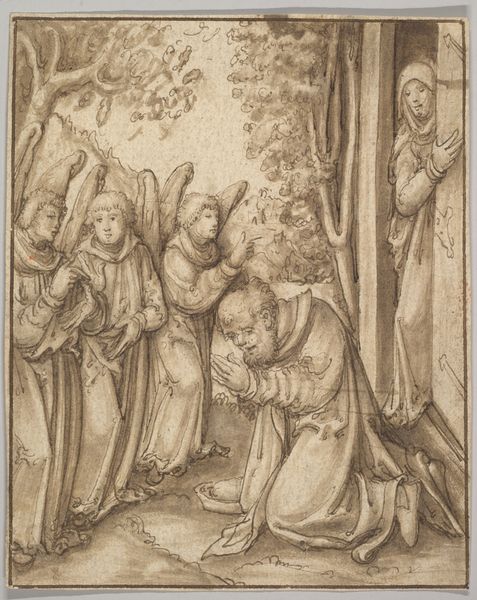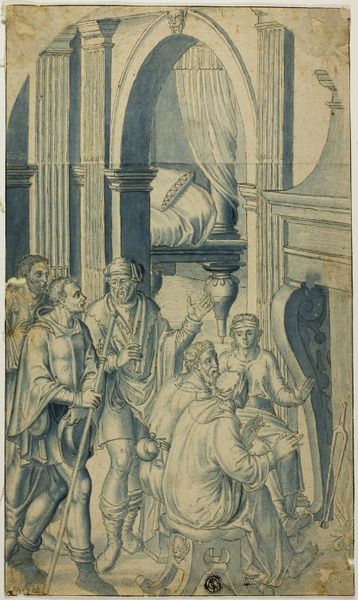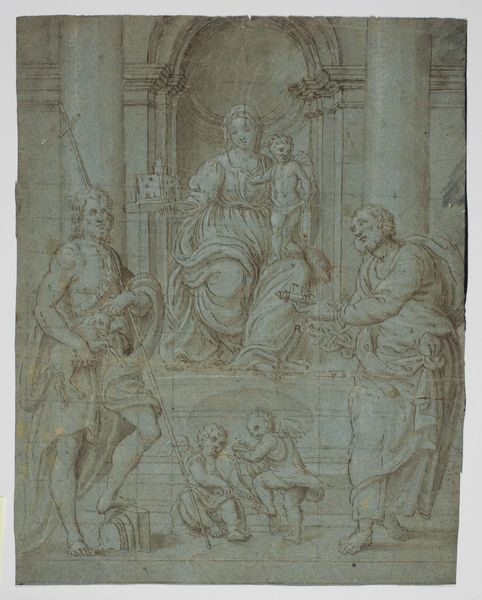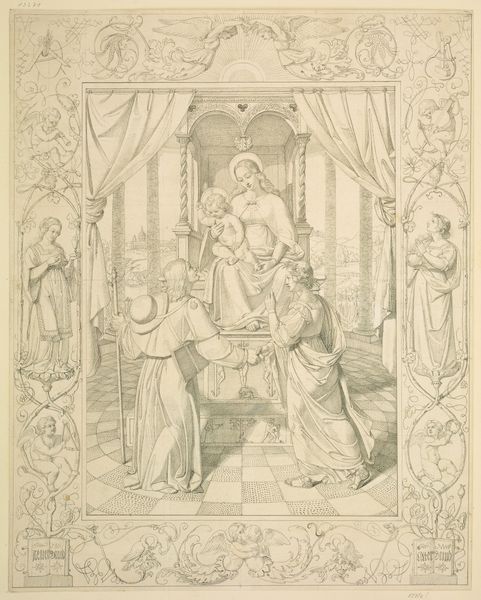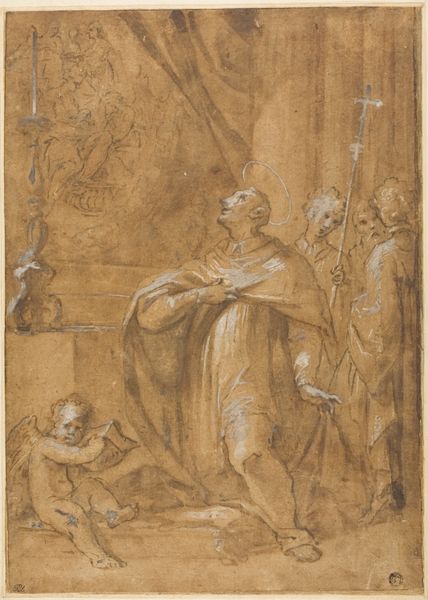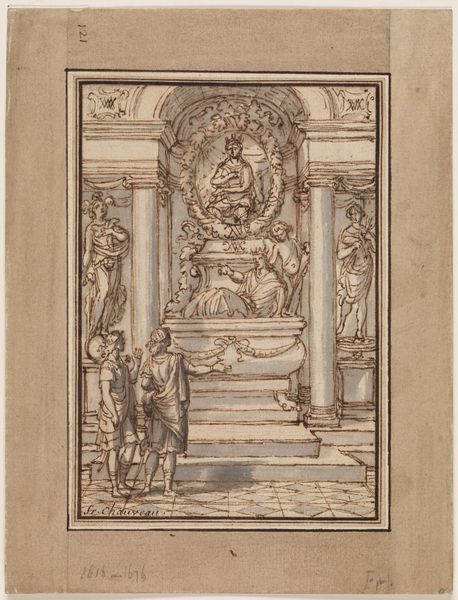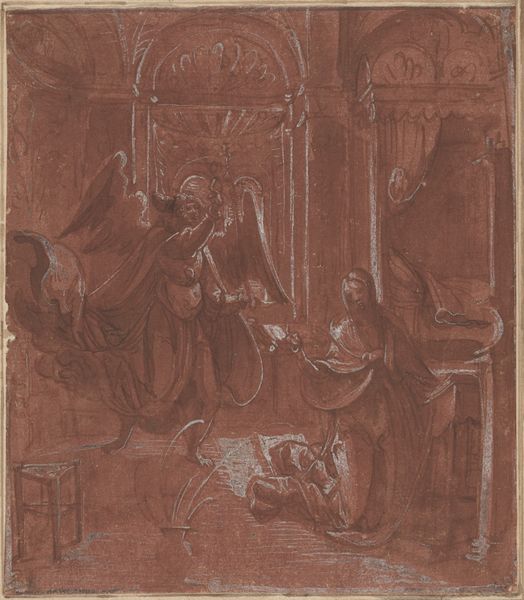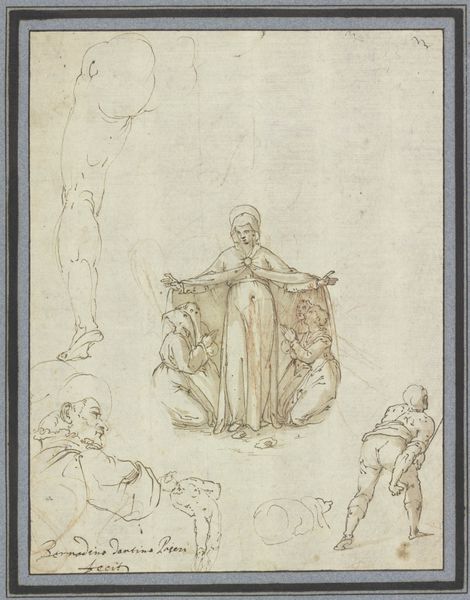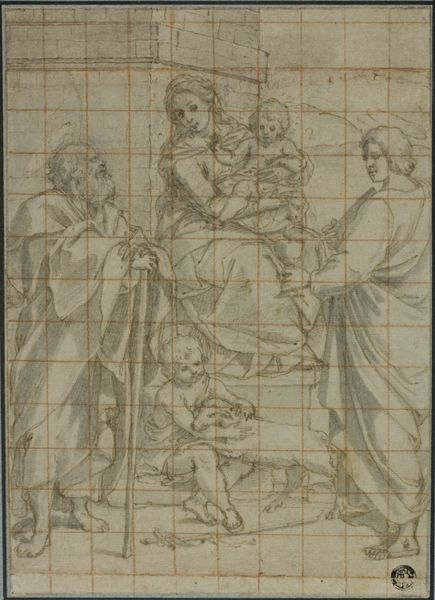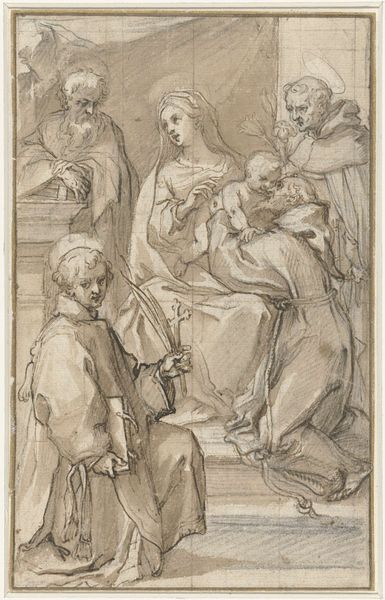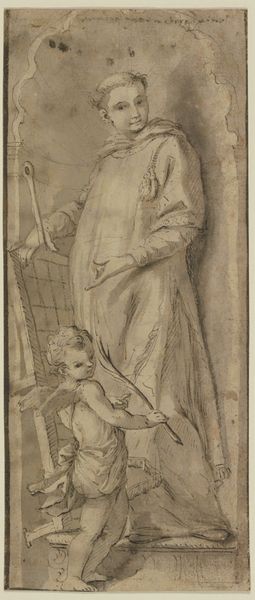
Design for a Cartouche with a Religious Subject in the Central Compartment 1540 - 1609
0:00
0:00
drawing, print, ink, charcoal
#
drawing
# print
#
charcoal drawing
#
figuration
#
ink
#
coloured pencil
#
charcoal
#
history-painting
#
italian-renaissance
Dimensions: 11-3/16 x 5-1/8 in. (28.4 x 13.0 cm)
Copyright: Public Domain
Curator: I find this charcoal, ink and colored pencil drawing on paper strangely comforting despite the somber subject matter, wouldn't you agree? Editor: Comforting isn't the word that immediately springs to mind. I'm struck by the preparatory nature of the piece; you can practically smell the workshop and feel the weight of the paper. Curator: The piece is entitled, "Design for a Cartouche with a Religious Subject in the Central Compartment" created by Taddeo Zuccaro, sometime between 1540 and 1609. It's currently held at the Metropolitan Museum of Art. Look at the iconographic program he's sketching out here. Editor: The process seems quite labored. Note how much pressure and reworking has gone into those lines around the cartouche’s edge. This wasn't some spontaneous outpouring; this was work. What about the actual crafting of cartouches at that time? Who were they for? What societal role did they perform? Curator: Ah, but that's where the beauty lies. Zuccaro is presenting a religious narrative here, of course, maybe connected to themes of judgement or even atonement? Cartouches historically functioned almost like enshrined thought. It suggests how deeply ingrained religious stories were to everyday visual culture. Editor: Interesting that these scenes were mediated, made more real through, and literally framed in metal, stone or wood. It's a separation, a visual product intended for consumption, but one that invites closer engagement at the same time. You see it, and reach to touch it as an everyday thing, or to invoke a larger significance. Curator: I like that; that's precisely where my mind wandered. The image, nestled within its frame, becomes more than a mere picture, it acts as a cultural mnemonic. In psychology, these little devices are what cause recall; in that era, cultural continuity would have flowed freely from these artifacts. Editor: A testament to craftsmanship becoming integrated into daily life, yes. One can just imagine the social network around it; what class commissioned the pieces? Who was skilled enough to manufacture it? These questions pull me deeper into it all. Curator: This little glimpse into a master's design work provides a reminder of the symbolic language of the Renaissance. These symbols persist, resonating even now, though changed over time. Editor: It reveals a past embedded in practical artistic application and social utility – reminding us of a context often overlooked.
Comments
No comments
Be the first to comment and join the conversation on the ultimate creative platform.
